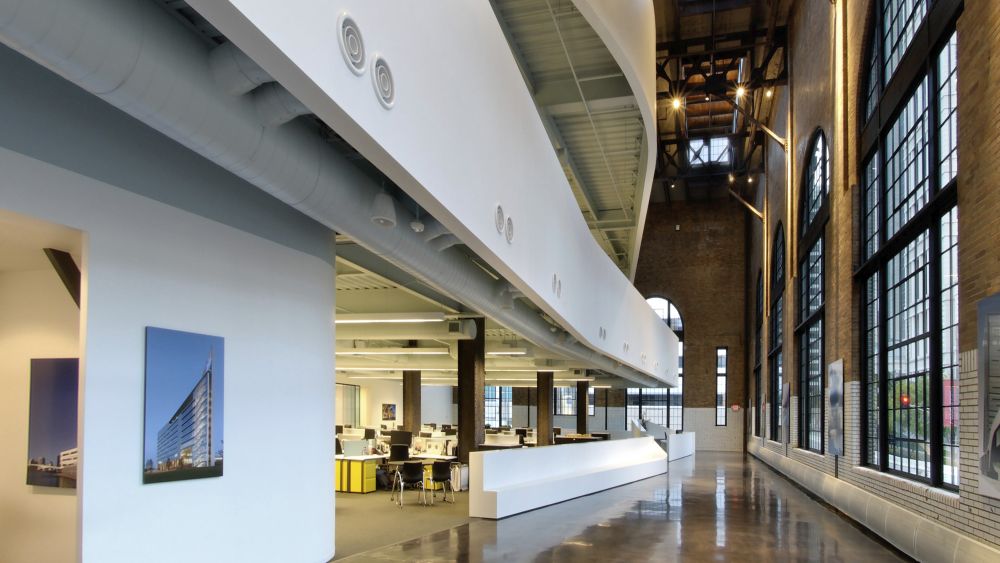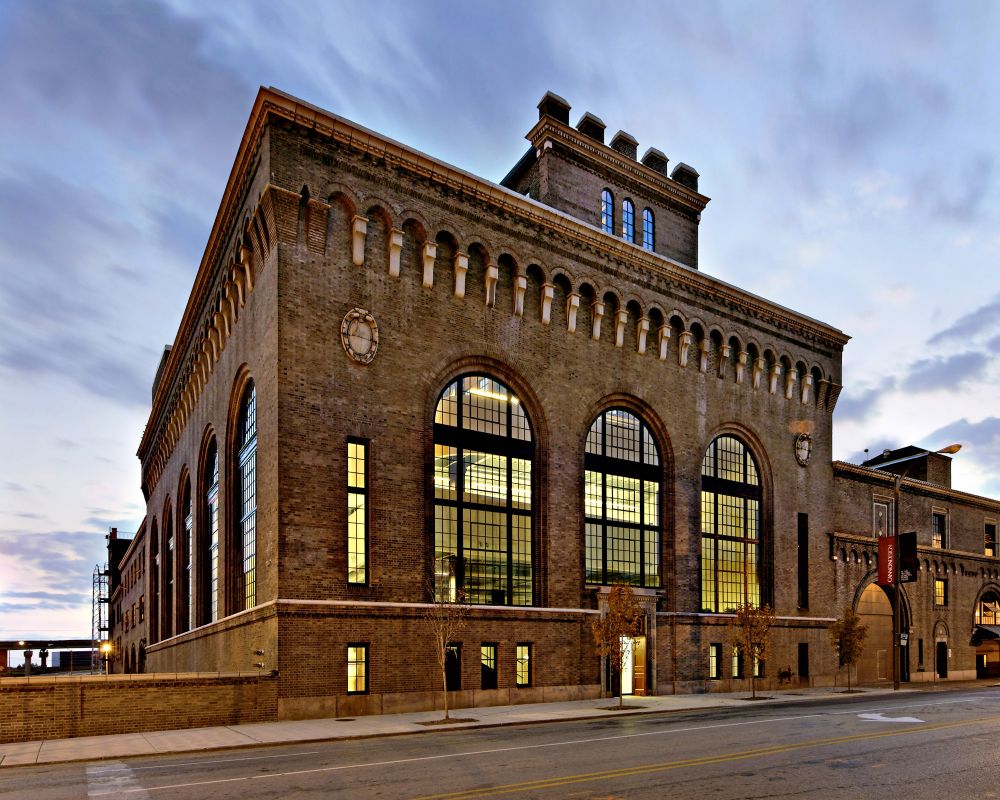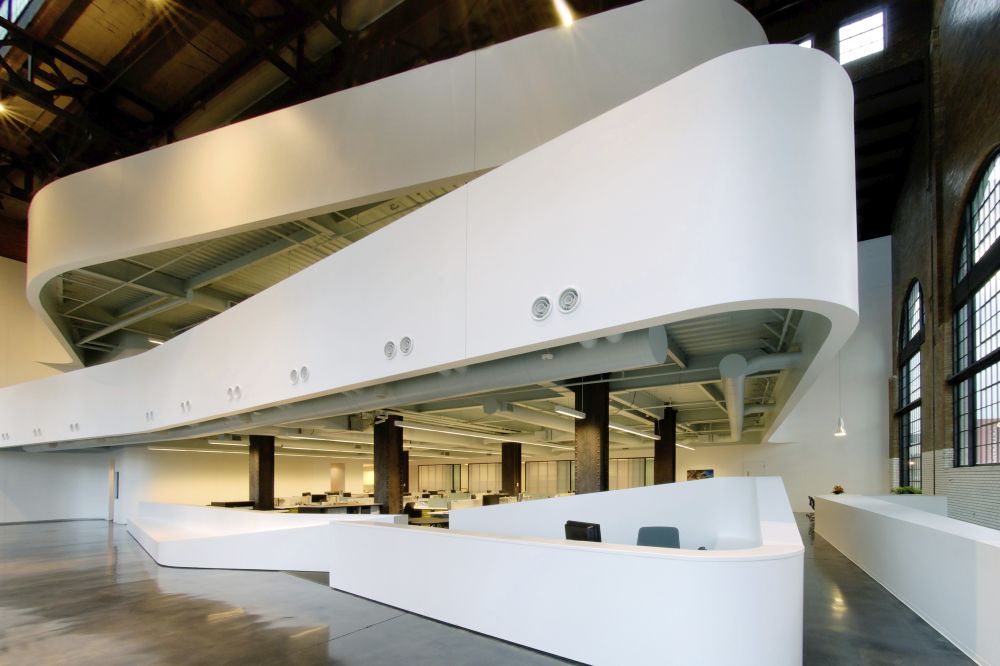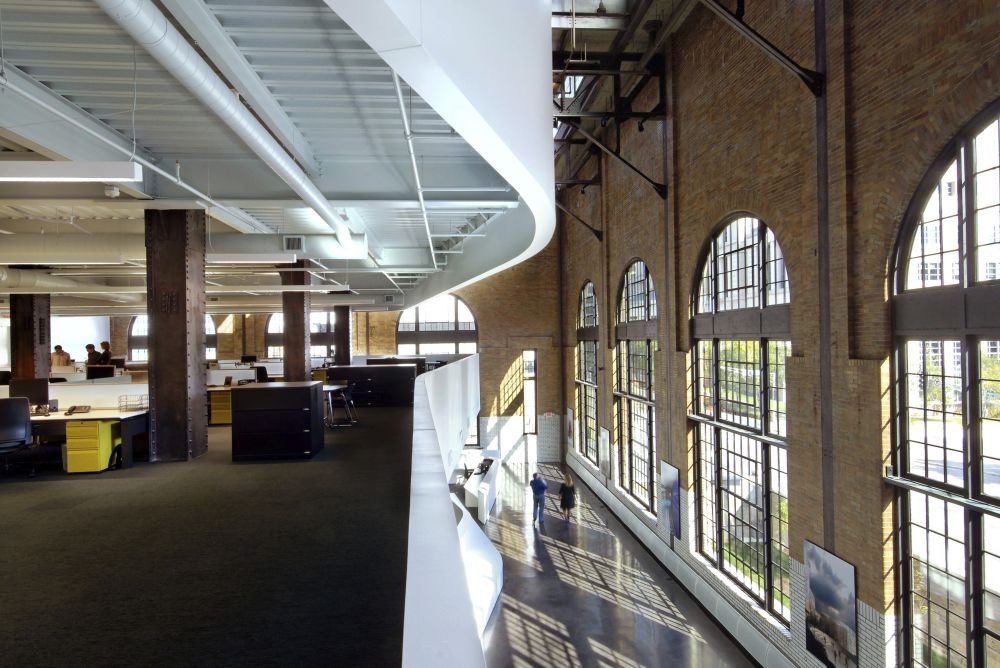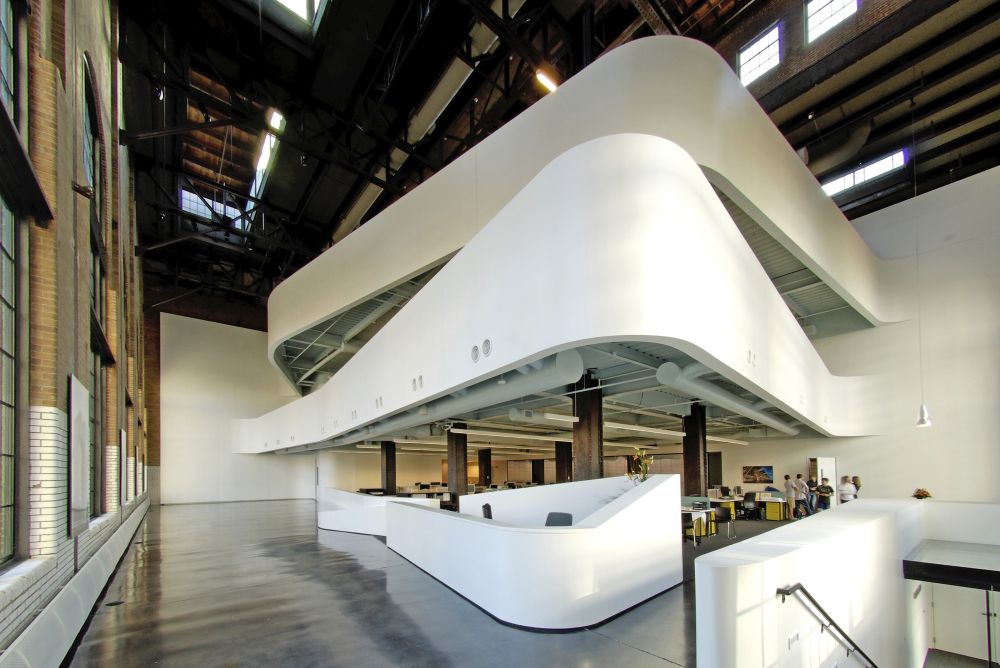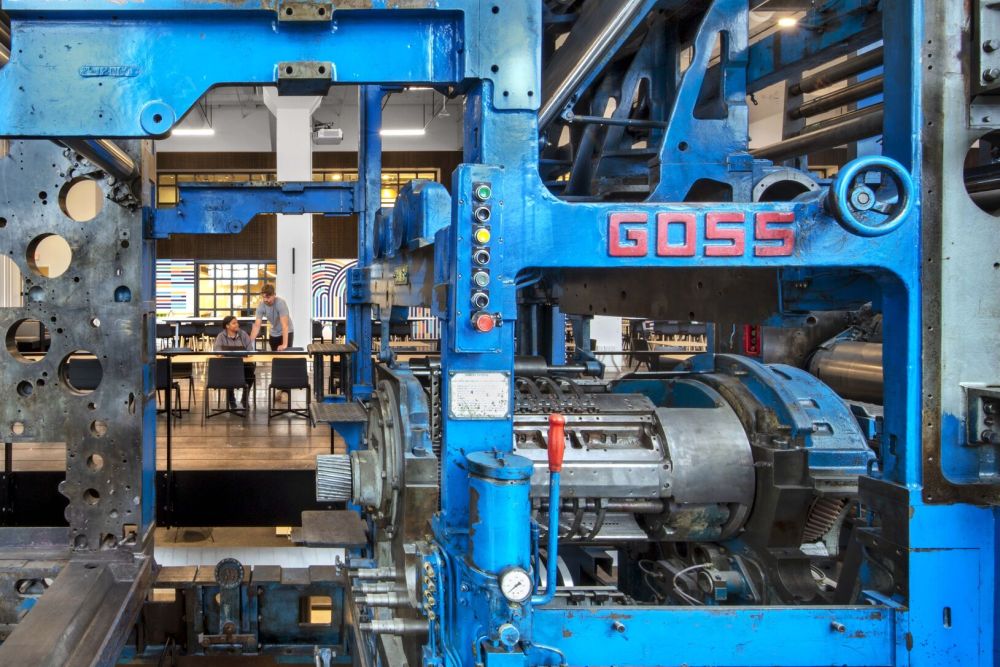The afterlife of coal plants: Bloomberg celebrates St. Louis Power House
Social Sharing
Bloomberg has published an in-depth photo essay on the surprisingly stunning afterlives of old coal plants that includes a look at our St. Louis Power House.
Our team transformed the St. Louis Power House into our new downtown office after it had stood vacant for nearly 30 years. Originally constructed in 1928 and designated a landmark by the National Historic Register, the Power House provided coal-fired steam heat to a dozen downtown St. Louis buildings until its decommissioning in 1980.
Although the building’s exterior shell and original structure were fundamentally sound, significant imagination and rigorous design analysis were required to convert the building for workplace use. New floors were cantilevered within the building’s massive volume to create a total of 32,000 square feet of office and conference space. Exterior improvements included the creation of a 3,500-square-foot urban garden and historically accurate replacement of windows in their original masonry openings.
The Bloomberg piece is part of their Green coverage and focuses on how these buildings were formerly used for a very unfriendly environmental practice (coal-fired energy) but now have important second lives. Of our Power House, Bloomberg writes, “Many original features were maintained in the redesign. Years ago you could see giant coal-burning mechanics through the 26′ tall windows in the 1928 power plant. CannonDesign has converted it into an environmentally friendly regional office.”
Beyond the inherent sustainability in converting an existing building, the Power House received LEED Gold certification and outperforms energy-use targets. The project has earned prestigious design awards, including an Honor Award from the American Institute of Architects, and widespread media coverage since its reopening in 2006.
